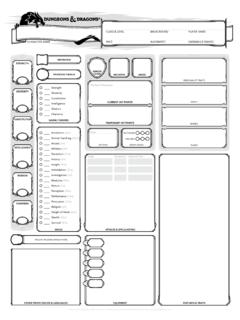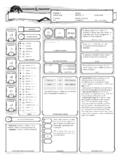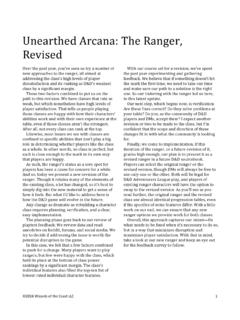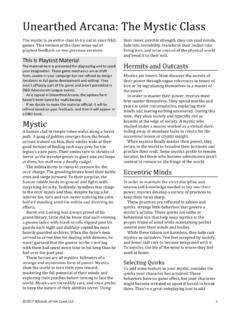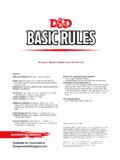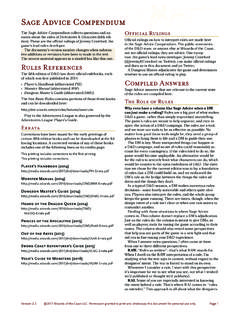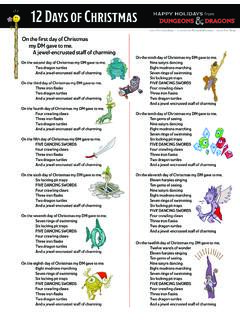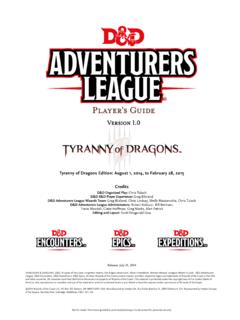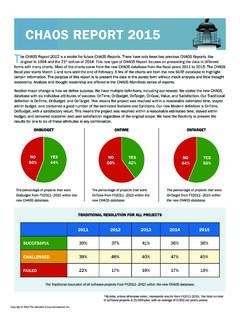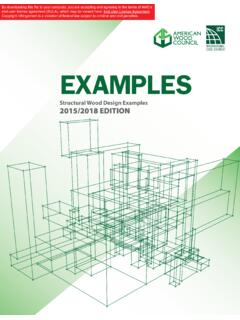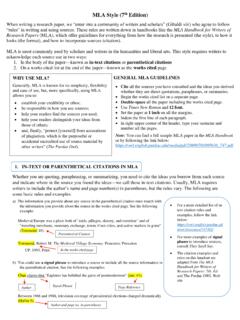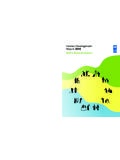Transcription of Conversions to 5th Edition D&D
1 Version @ 2015 Wizards of the Coast LLC. Permission granted to print and photocopy this document for personal use only. Page 1 Conversions to 5th Edition D&DThis document provides guidelines for converting charac-ters and adventures from earlier editions of Dungeons & Dragons to the fifth Edition . Conversion of D&D material is more art than science. The aim of conversion is to arrive at something that feels like the older- Edition version, rather than at an exact repli-cation. The guidelines in this document are intended to help you create what you want, not to force your choices along particular lines.
2 Converting Your Player CharacterWork with your DM to determine the best fit for your con-version. Your DM is the final arbiter of any DM sets the starting level of a converted character. For fourth Edition characters, fifth Edition level is two-thirds of fourth Edition level, rounded normally instead of always down. For example, 25th level in fourth Edition becomes 17th level in fifth Edition . Level in other editions converts directly into fifth Edition , but only up to 20th the race that most closely matches your character s race.
3 For instance, a wild elf in Faer n is closest to the wood elf in the Player s Handbook. Replace all racial traits with those from the fifth Edition Player s Handbook. Ignore traits that have no bearing on fifth Edition characters, such as third Edition s favored class trait or other editions class limitations. Racial proficiencies of like kind skill, tool, or weapon can be swapped for their equivalents in fifth Edition . You might swap skill proficiency for tool proficiency when the tool is a better representation of a skill from a previ-ous Edition .
4 As an example, a wild elf character should have profi-ciency with spears, according to the third Edition book Races of Faer n. Your character could give up longsword and shortsword proficiency from the Elf Weapon Training trait to have spear and javelin proficiency instead. Simi-larly, if your elf character from third Edition relied on rapier proficiency garnered from race, you might swap longsword proficiency from Elf Weapon Training for rapier the DM: Race ConversionsFor races not represented in the Player s Handbook, see the Creating a Race section in chapter 9 of the Dungeon Mas-ter s Guide.
5 Start with the racial traits from one or more previous editions. From them, reconstruct the race in fifth Edition terms, using existing races and their traits as mod-els. The following general guidelines should help. Consistency. Keep only those racial traits that are con-sistent from Edition to Edition . Especially ignore a trait that appears in only one previous Edition . Ability Scores. Bonuses to ability scores from race and subrace should add up to no more than +3, unless the race has few other beneficial traits. In most cases, no one score should receive a bonus higher than +2.
6 Three previous editions of the game included negative racial adjustments to ability scores, and two included ra-cial ability score maximums and minimums. Fifth Edition avoids such parameters, but in the case of monstrous races, such as kobolds, penalties can be appropriate. Damage Resistances. In fifth Edition , the damage re-sistance trait has no numeric value. A creature either has resistance to a damage type, or it does not. Infravision. Racial infravision converts directly to fifth Edition s darkvision. Use the race s infravision range for its darkvision, or a range chosen by your DM.
7 Low-Light Vision. Most races that have low-light vision in third or fourth Edition should have darkvision. The range defaults to 60 feet. Powers. Racial powers can be ignored or converted to the capability of casting a spell similar to the power. A char-acter of the race should have to be of a level high enough to cast the spell as if the character were a spellcaster. For example, a spellcaster should be 5th level to cast a 3rd-level spell. A race that can cast innate spells must have a default spellcasting ability score chosen from among Intelligence, Wisdom, and Charisma.
8 Small Modifiers. Other editions Small races often have traits that offer modifiers to Armor Class, attack rolls, sav-ing throws (or defenses), and skills. Ignore a bonus, unless it is +4 or higher and not to Armor Class. If it is at least that high, proficiency or advantage might be called for as a racial trait. Similarly, ignore a penalty that isn t as severe as 4. Such a penalty might call for disadvantage in the appli-cable the fifth Edition class that most closely matches your character s class (or classes, if your character has more than one).
9 Alternatively, choose the class that most closely matches how you d like your character to be in the game s narrative. Don t feel constrained by your character s original class or classes. For example, you might decide that warlock or sorcerer is a better fit for your magic-user s story than wizard. Similarly, you are free to decide that fifth Edition s paladin class or a cleric of the War domain better expresses your fighter/cleric than multiclassing does. Class names can frame your thinking (the wizard was called a magic-user in first Edition and a mage in second Edition , and the rogue was called a thief in first and second Edition ).
10 But try to think outside that box. For instance, your fourth Edition avenger might be a fifth Edition paladin with the Oath of Vengeance or a monk who follows the Way of Shadow. Your fourth Edition warden could be a fifth Edition cleric of the Nature domain, ranger of the Hunter arche-type, or paladin who has taken the Oath of the Ancients. Multiclassing can be the answer to fulfilling many char-acter concepts. Before multiclassing in fifth Edition , how-ever, make sure no single class s development path fits the character s intent better.

